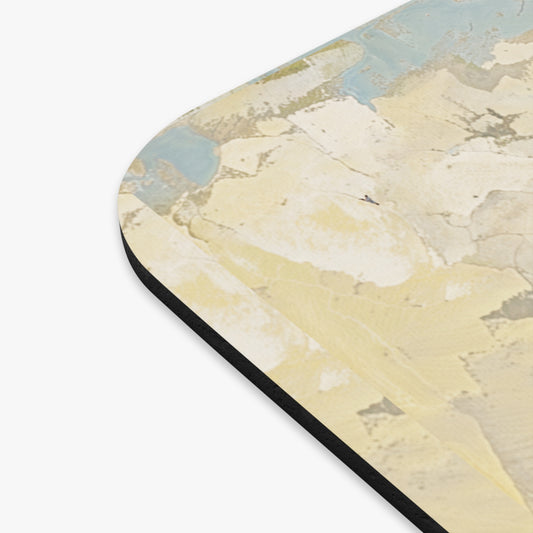Munsell Color - Lesson 2 Value
Share
Munsell Color - Lesson 2 Value
Value is the degree of lightness or darkness of a color. When squinting any color should fall very close within one of the following 10 values. Here are some important values to remember:
N means neutral and is followed by a slash /
White has a value of N10/
Mid value grey value N 5/
Absolute Black value N 0/
 Grey Scale
Grey Scale
Value relationships are very important because they help the artist to create convincing form. A Grizaille underpainting is a great way to learn and follow this principle. By doing grizaille studies, patterns of highlights, shadows, brightness and darkness can be worked out before color application begins.
Many of the Old Master's did grizailles before working in color.
 Odalisque by Ingre
Odalisque by Ingre
Of course that does not mean that values can't be established by doing a underpainting in brown tones. A grisaille is simply an easier way to get a handle on values.
 by Vermeer
by Vermeer
This underpainting was created using Raw Umber and Lead White. Again the artist established form by correctly applying values.
-Establish Mood with Values
It is also advisable to consider the overall mood of the painting. Should the painting be light in other words a high key painting, most dark - a low key painting, or balanced - a full key painting.
-Remember
Values should nor cross over, which means the darkest light in the light area should be the lightest light in the dark area and vs versa.
-------------------------------------------------------------------------------------
Mixing a Grey Value String
Please be aware that most Blacks have a bluish tint and when mixed with White do not produce a truly neutral Grey.
I like to use Micheal Harding's Ivory Black and Flake White #2
When mixing you will notice that the Flake White has a lesser tintin quality then Titanium White, in other words you will need a lot of Flake White to lighten the Ivory Black. Since my skin palette is created using Micheal Harding's paint, I do not mind this attribute.
Photo will follow....
-----------------------------------------------------------------------------------
N10/ - White
- Flake White other names ( Cremnitz White/Kremser Weiss/blanc d'argent)
Drying time: fast dry - ca. 4 days
Properties: translucent - lean paint- low covering power - low oil absorbency
Observed changes: does not crack or yellow, great for underpainting
Note: Poisonous contains lead -
Brands: Windsor Newton Cremnitz White (no zinc) dries in ca 1.5 days, Grumbacher's tends to yellow
Flake White does not kill chroma the way Titanium White does.
 Flake White #2
Flake White #2
Munsell: N10/
Drying time: fast dry - ca. 3 days
Properties: Slightly Transparent. Very Low Oil Content. Low covering power. Not chalky.
Observed changes: does not crack or yellow, great for underpainting
Note: Lightfastness Excellent. This is a blend, in Linseed oil binder, of 67% Lead Carbonate with 33% Zinc Oxide, which is added to increase the brilliance of the Lead White. TOXIC.
-Paris White
Drying time:
Properties:
Observed changes:
Note:Finest grade of White
Brands:
-Titanium White
Drying time: about 1 week
Properties: opaque - very thick paint - great covering power
Observed changes:
Note: most brillian of all whites, least likely to crack or yellow,great for underpainting
Brands:Gamblin's brilliant white is the lightest of all the brands of Titanium Whites
-Transparent White
Drying time:
Properties: transparent - thin - poor covering power
Observed changes:
Note: not suited for use in underpainting, good for glazing, scumbeling
Brands:
-Zinc White/Zink Weiss/Blan Zinc Oxide
Drying time: Very slow drying
Properties: transparent - thin - poor covering power
Observed changes: no yellowing, can crack
Note: not suited for use in underpainting, good for glazing, scumbeling or impasto techniques. Bright, cooler than Flake or Cremniz White
Zinc White does not kill chroma the way Titanium White does.
-----------------------------------------------------------------------------------
Greys
-Paynes Grey
Drying time:
Properties: bluish - low intensity
Observed changes:
Note:Finest grade of White
Other ways to mixing Greys:
Cool Grey
-> Thalo Blue + Burnt Umber
-> Ivory Black + White
Neutral Grey
-> Flake White #2 + Ivory Black
 N10/ through N0/
N10/ through N0/
Warm Grey
-> Cad. Orange + Black + White + Sap Green
-------------------------------------------------------------------------------------
N0/ Blacks
 Micheal Harding Ivory Black
Micheal Harding Ivory Black
Munsell: N0/
Drying time: Average Drying. High oil Content.
Properties: Semi-Opaque.
Observed changes: Excellent Lightfastness.
Note: It is denser in shade and cooler than Lamp Black with stronger tint power.
Vasari Ivory Black
Munsell: N.05/
Drying time:
Properties:
Observed changes:
Note: Vasari's Ivory Black is a bit darker than Williamsburg.
Williamsburg Ivory Black is more N.75/ at least to my eye.
Munsell: N.75/?
Drying time:
Properties:
Observed changes: .
Note: Williamsburg Ivory black is a bit lighter than Vasari Ivory Black.
MIXING BLACK COMBOS
- Black is a "fat" color and takes a while to dry. To avoid sinking in and ending up with a dead looking black, it is advisable to mix your own black.
- Often black can have a bluish tint
-use black to darken and reduce the chroma of earth colors and other low-chroma colors.
For transparent black - mix Aliz. Crimson with Ivory Black
Result: intensifies black and creates depth color very similar to a deep brown/black
Really dar Blacks:
- Mix Ultramarine and Burnt Sienna or Vridian and Pyrol Ruby
Value is the degree of lightness or darkness of a color. When squinting any color should fall very close within one of the following 10 values. Here are some important values to remember:
N means neutral and is followed by a slash /
White has a value of N10/
Mid value grey value N 5/
Absolute Black value N 0/
 Grey Scale
Grey ScaleValue relationships are very important because they help the artist to create convincing form. A Grizaille underpainting is a great way to learn and follow this principle. By doing grizaille studies, patterns of highlights, shadows, brightness and darkness can be worked out before color application begins.
Many of the Old Master's did grizailles before working in color.
 Odalisque by Ingre
Odalisque by IngreOf course that does not mean that values can't be established by doing a underpainting in brown tones. A grisaille is simply an easier way to get a handle on values.
 by Vermeer
by VermeerThis underpainting was created using Raw Umber and Lead White. Again the artist established form by correctly applying values.
-Establish Mood with Values
It is also advisable to consider the overall mood of the painting. Should the painting be light in other words a high key painting, most dark - a low key painting, or balanced - a full key painting.
-Remember
Values should nor cross over, which means the darkest light in the light area should be the lightest light in the dark area and vs versa.
-------------------------------------------------------------------------------------
Mixing a Grey Value String
Please be aware that most Blacks have a bluish tint and when mixed with White do not produce a truly neutral Grey.
I like to use Micheal Harding's Ivory Black and Flake White #2
When mixing you will notice that the Flake White has a lesser tintin quality then Titanium White, in other words you will need a lot of Flake White to lighten the Ivory Black. Since my skin palette is created using Micheal Harding's paint, I do not mind this attribute.
Photo will follow....
-----------------------------------------------------------------------------------
N10/ - White
- Flake White other names ( Cremnitz White/Kremser Weiss/blanc d'argent)
Drying time: fast dry - ca. 4 days
Properties: translucent - lean paint- low covering power - low oil absorbency
Observed changes: does not crack or yellow, great for underpainting
Note: Poisonous contains lead -
Brands: Windsor Newton Cremnitz White (no zinc) dries in ca 1.5 days, Grumbacher's tends to yellow
Flake White does not kill chroma the way Titanium White does.
 Flake White #2
Flake White #2Munsell: N10/
Drying time: fast dry - ca. 3 days
Properties: Slightly Transparent. Very Low Oil Content. Low covering power. Not chalky.
Observed changes: does not crack or yellow, great for underpainting
Note: Lightfastness Excellent. This is a blend, in Linseed oil binder, of 67% Lead Carbonate with 33% Zinc Oxide, which is added to increase the brilliance of the Lead White. TOXIC.
-Paris White
Drying time:
Properties:
Observed changes:
Note:Finest grade of White
Brands:
-Titanium White
Drying time: about 1 week
Properties: opaque - very thick paint - great covering power
Observed changes:
Note: most brillian of all whites, least likely to crack or yellow,great for underpainting
Brands:Gamblin's brilliant white is the lightest of all the brands of Titanium Whites
-Transparent White
Drying time:
Properties: transparent - thin - poor covering power
Observed changes:
Note: not suited for use in underpainting, good for glazing, scumbeling
Brands:
-Zinc White/Zink Weiss/Blan Zinc Oxide
Drying time: Very slow drying
Properties: transparent - thin - poor covering power
Observed changes: no yellowing, can crack
Note: not suited for use in underpainting, good for glazing, scumbeling or impasto techniques. Bright, cooler than Flake or Cremniz White
Zinc White does not kill chroma the way Titanium White does.
-----------------------------------------------------------------------------------
Greys
-Paynes Grey
Drying time:
Properties: bluish - low intensity
Observed changes:
Note:Finest grade of White
Other ways to mixing Greys:
Cool Grey
-> Thalo Blue + Burnt Umber
-> Ivory Black + White
Neutral Grey
-> Flake White #2 + Ivory Black
 N10/ through N0/
N10/ through N0/Warm Grey
-> Cad. Orange + Black + White + Sap Green
-------------------------------------------------------------------------------------
N0/ Blacks
 Micheal Harding Ivory Black
Micheal Harding Ivory BlackMunsell: N0/
Drying time: Average Drying. High oil Content.
Properties: Semi-Opaque.
Observed changes: Excellent Lightfastness.
Note: It is denser in shade and cooler than Lamp Black with stronger tint power.
Vasari Ivory Black
Munsell: N.05/
Drying time:
Properties:
Observed changes:
Note: Vasari's Ivory Black is a bit darker than Williamsburg.
Williamsburg Ivory Black is more N.75/ at least to my eye.
Munsell: N.75/?
Drying time:
Properties:
Observed changes: .
Note: Williamsburg Ivory black is a bit lighter than Vasari Ivory Black.
MIXING BLACK COMBOS
- Black is a "fat" color and takes a while to dry. To avoid sinking in and ending up with a dead looking black, it is advisable to mix your own black.
- Often black can have a bluish tint
-use black to darken and reduce the chroma of earth colors and other low-chroma colors.
For transparent black - mix Aliz. Crimson with Ivory Black
Result: intensifies black and creates depth color very similar to a deep brown/black
Really dar Blacks:
- Mix Ultramarine and Burnt Sienna or Vridian and Pyrol Ruby




























































